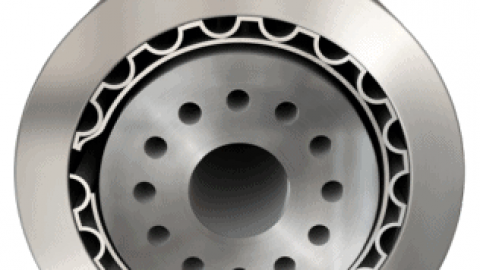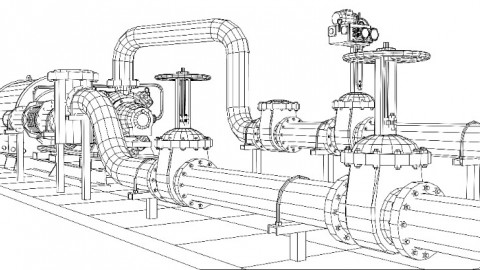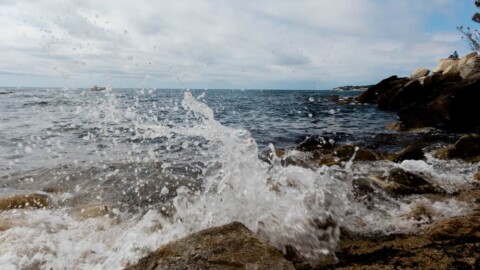by Joe Evans, Pump Ed 101
In this article, we will define waterhammer and take a look at the events that lead to its occurrence. We will also try to gain some perspective on the additional pressure that it generates.
Waterhammer (also water hammer) is a pressure surge that can arise in any pumping system that undergoes an abrupt change in its rate of flow, and usually results from pump starts and stops, the opening and closing of valves, or water column separation and closure.
These abrupt changes can cause all or part of the flowing water column to undergo a change in its momentum. This change can produce a shock wave that travels back and forth between the barrier that created it and some secondary barrier.
If the intensity of the shock wave is high, physical damage to the system can occur. Oddly enough, it can be more of a concern in low pressure applications.
Waterhammer is yet another example of conservation of energy and results from the conversion of velocity energy into pressure energy.
Since liquids have a very low compressibility, the resulting pressure energy tends to be very high.
Perhaps the best way to visualise this action is to start with a hypothetical example.
Figure 1 shows a pump that is pumping water into a pipe that was empty when the pump started. The valves, located at the pump discharge and the far end of the pipe, are fully open and both have the ability to close instantaneously.
The pipe, valves and other fittings are entirely inelastic and no volume change can occur regardless of the pressure. Also, the column of water flowing through the pipe has a leading edge that is perfectly flat and matches that of the cross sectional ID of the pipe.
Just as the leading edge of the water column reaches the downstream valve, it closes at nearly the speed of light and entraps no air ahead of the water column.
Even though the leading edge has struck the closed valve, flow into the pipe continues for the next few milliseconds.
Just as flow ceases, the upstream valve closes (this time at the true speed of light) and the water column is completely isolated between the two valves.
What events occur as the column strikes the closed, downstream valve and why does water continue to enter the pipe even though the valve is closed?
Well, if this moving column was a column of metal instead of water (did I mention that this is a hypothetical example?), a couple of things could occur.

Depending upon its coefficient of restitution (its ability to avoid permanent damage) the kinetic energy due to flow (motion) could be transformed into mechanical energy as the leading edge of the metal column is crushed against the closed valve.
If this occurred, the column would come to rest and remain motionless at the valve. If its restitution is high enough to prevent crushing, that same kinetic energy could be used to reverse its direction in the form of a bounce.
Regardless of the outcome, the “entire” metal column would either come to rest or bounce in the opposite direction. Neither of these events occur when water is involved. Water is a “nearly non compressible” liquid, but the flip side of that statement would indicate that it is “slightly compressible”.
At ambient temperature one PSI will decrease its volume by about 0.0000034 per cent. That seems pretty small but the larger the volume, the easier it is to see the effect.
For example, if water did not compress, sea level would be roughly one hundred feet higher than its current level.
At very high pressures, say 40,000 PSI, its compressibility is increased to about 10 per cent.
But, most water is not just water – it also contains air which is primarily nitrogen (78 per cent) and oxygen (21 per cent). If this were not the case, there would be no fish.
Dissolved air composes about two per cent of a given volume of unprocessed water and adds, substantially, to its compressibility.
It is water’s (and that of the dissolved air) compressibility that causes it to act differently than the column of metal. Were it not compressible, its leading edge would be permanently crushed or the entire column would bounce backwards.
When the leading edge of a water column strikes the closed valve it comes to a halt, but the water behind it is still in motion so it begins to compress.
This compression along the entire length of the column allows a small amount of water to continue to flow into the pipe even though the leading edge has halted.
When flow ceases, all of its kinetic energy of motion and that due to compression will have been transformed into pressure energy.
Compression begins at the leading edge of the water column, and since the additional energy it produces cannot continue on past the closed valve, a pressure or shock wave is generated and travels along the path of least resistance which, in this example, is back upstream.
Its inception is very similar to the “echo” that is produced when a sound wave, travelling through air, strikes a similar barrier.
When the wave hits the upstream valve it is reflected back downstream but with a diminished intensity.
This back and forth motion continues until friction and reflection losses cause the wave to disappear.
The speed at which a wave travels and the energy it loses during travel depends upon the density and compressibility of the medium in which it is travelling.
It turns out that the density and compressibility of water make it a very good medium for shock wave generation and transmission.
The pressure waves created by hydraulic shock have characteristics similar to those of sound waves and travel at a similar velocity.
The time required for a waterhammer pressure wave to negotiate a length of pipe is simply the pipe length divided by the speed of sound in water (approximately 4860 ft/sec).
In waterhammer analysis, a time constant that is often used describes the progression of the wave from its inception to the secondary barrier and then back again.
It takes the form of Tc = 2L/a (where “L” is the pipe length and “a” is the velocity of the wave (speed of sound)).
For a 1000 foot length of pipe it would require less than one half second for the wave to make a complete round trip.
The pressure created by this shock wave is directly proportional to both the wave velocity and the velocity of the water flowing in the pipe.
Although the equation below does not take into account the effect of pipe diameter and elasticity, it will provide some insight as to the additional pressure that is created by a waterhammer pressure wave.
P(additional) = aV / 2.31g
“P” is the additional pressure created by the shock wave, “a” is wave velocity, “V” is the velocity of the flowing water in the pipe in feet per second, “g” is the universal gravitational constant @ 32 ft/sec2 , and 2.31 is the pressure conversion constant.
At a pipeline velocity of five ft/sec the additional pressure created by the shock wave is approximately 328 PSI. Increase that velocity to 10 ft/sec, and the additional pressure increases to about 657 PSI.
Obviously, systems that are not designed to accommodate such an increased pressure are often damaged or even destroyed.
In the next part of this series we will take a look at the three major causes of waterhammer and the factors that contribute to the magnitude of the shock wave it generates. We will also see why waterhammer can be more damaging in low pressure systems.
Joe Evans has been in the pumps industry since 1986 and is passionate about the sharing of knowledge within the industry. To read more of his insights into the world of pumping, visit www.pumped101.com.

















